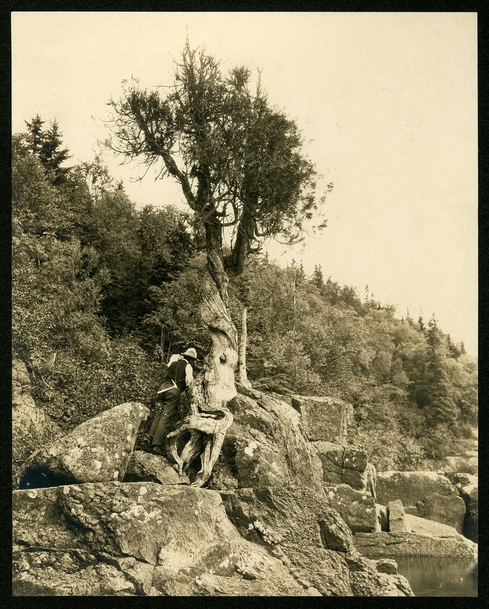I was entering caption information for the botanical photographs in the Department of Botany collection. This involved matching the digital reference image on my computer screen to the physical mounted photograph on my desk, deciphering the hand-written plant identification scrawled in cursive on the back of the mount, then translating what letters I thought were written with the help of plant, fungi, and algae databases in order to form a proper scientific name and enter an accurate transcription.
After entering dozens of captions for images of fungi that I otherwise would never be able to identify by photograph alone (Cladonia alpestris, Usnea longissima…), and just after I pressed the down arrow on my keyboard to advance to the next image after Umbilicaria muhlenbergii, I looked up at my screen and stopped.
Finally, a botanical image I could identify!
Prior to beginning work on the Exploring project, I worked at the Minnesota Museum of American Art (MMAA) and the Weisman Art Museum (WAM), two local art museums that have recently exhibited works that were inspired by the “Spirit Tree” – the very tree that appears in this photograph from 1902. The Spirit, or “Witch Tree,” to which it is also referred, is a centuries old cedar tree that grows out of a rock along the shore of Lake Superior near Grand Portage. Witch Tree Torso 23, by Minnesota artist Hazel Belvo, was exhibited at WAM last year. Another Belvo work that depicts the tree is currently being exhibited at the MMAA.
At an artist talk held in conjunction with the WAM exhibit, Belvo explained the significance that the tree holds to the native Ojibwe of the Grand Portage Band of Chippewa. Offerings of tobacco and vermilion were once brought to the tree in order to ensure safe passage through the waters of Lake Superior. Today, the tree is part of the Grand Portage Reservation. Though canoers and kayakers can freely pass by water, those wishing to visit the tree by land must be accompanied by a tribal guide.
In August of 1902, photographer C.J. Hibbard and faculty from the Department of Botany examined the tree during their field study of the Grand Portage area. In addition to capturing the mosses and lichen present on the adjacent rocks, Hibbard produced the above photograph of a man making a careful observation.
With only the photograph and the hand-written caption to go by, there is no way of knowing whether the botanists knew of the tree’s spiritual significance, as in addition to the stamp “Department of Botany, U of M, C.J. Hibbard, Photographer,” the only other notation made on the photograph reads, “Thuja occidentalis, gnarled cedar.”
